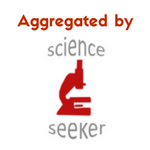
Derrick Rossi, President and CEO of Convelo Therapeutics and Co-founder of Moderna Therapeutics, presenting at Medicine by Design’s 8th Annual Symposium
The Second World War (WWII) and post WWII saw an appetite for new technology and science. In particular, after WWII scientists were encouraged to conduct research for the sake of knowledge and to benefit society. However, there weren’t as many opportunities outside of academia to create biotechnology startups as there are today. In the last 50 years, science has an increasingly economic dimension. Typically, we don’t view science as just a system of knowledge production, but also a social institution embedded in society.
This article outlines the three levels of science and some concerns to do with commercializing science, which can influence how we view science. The three levels of science are sometimes referred to as Mode 1, Mode 2 and Mode 3 science. Mode 1 science refers to a constellation of ideas, methods (“the scientific method”), values and norms, as well as the strict discipline in upholding them. These values include objectivity, honesty/academic integrity and transparency. It’s also often referred to as “traditional science” or basic science: doing science just for the sake of learning. It aims (perhaps idealistically) to keep apart the internal and external forces influencing science. Mode 1 science may or may not have applications – and this is where we get into Mode 2 science.
Mode 2 science is more application oriented, where the research involved has implications for improving the public’s health and living conditions, informing the public about matters of general concern, and contributing to economic development. Mode 2 science also involves a transition from being a “discipline” to “having a transdisciplinary approach” where science is produced in a variety of organization types, including university research labs, industrial labs, governmental agencies and spin-off companies. Mode 2 research includes Mode 1 science. Mode 3 is the eventual commercialization of academic science, where a product or service is introduced into the public market.
There are some concerns when commercializing science. First, it has been argued that the process of patenting and licensing intellectual property is antithetical to the academic norm of open communication and, since new knowledge builds upon the old, there is potential for stifling scientific advancement. Second, conflict of interest might arise such that corporate-sponsored university research could compromise objectivity or increase the incidence of mal-practice. Third, as an offshoot of the first and second points, it is possible that the public might perceive scientists as more biased as there is a higher chance of a conflict of interest when it concerns money.
In addition, external government-based funding grants exert a certain pressure on researchers to meet grant objectives and to demonstrate that there is future medical or commercial utility in their research, and so research projects will orient toward solving problems that might be more financially rewarding. However, this is not necessarily a problem unless it prevents fresh and innovative initiatives or if it deprioritizes research that you simply cannot foresee will have impact. For example, the research leading up to successful mRNA vaccine implementation for Covid-19 was a long and bumpy road. Over a couple of decades many researchers struggled to secure funding for this research. The initial startups that attempted to develop mRNA vaccines were excited at first, but due to challenges many of them dropped out of the effort. One of the largest hurdles was dealing with the instability of RNA and the enormous cost of the research. New knowledge building off old, and perseverance, eventually led to better outlook on the technology, which led to the companies that played pivotal roles producing the successful versions of Covid-19 mRNA vaccines that we know today.
The 8th Medicine by Design Symposium, on December 6, 2023, highlighted that it can be a significant challenge in getting venture capitalists confident about a biotechnology startup that involves treating a disease/infection in a novel way, or if those who are launching it don’t have enough credibility and/or track record. It does appear then that government funding agencies for either Mode 1 or Mode 2 academic research or venture capitalist funding for research-based biotechnology startups might have to be based on a leap of faith to pave the way forward in making advancements in medicine.
In Science—The Endless Frontier, a report given to the U.S. president Theodore Roosevelt in 1945, Vannevar Bush outlines a prerogative for generous funds to be provided for the scientific community to do both basic science and application-relevant research. It envisioned that universities would be the major actors in producing basic science and enjoy a high degree of autonomy and academic freedom. A passage from it reads:
“Basic research is performed without thought of practical ends. […] The scientist doing basic research may not be at all interested in the practical applications of his work, yet the further progress of industrial development would eventually stagnate if basic scientific research were long neglected. One of the peculiarities of basic science is the variety of paths which lead to productive advance. Many of the most important discoveries have come as a result of experiments undertaken with very different purposes in mind. Statistically it is certain that important and highly useful discoveries will result from some fraction of the undertakings in basic science; but the results of any one particular investigation cannot be predicted with accuracy.”
There are a multitude of pros for commercializing science, including reducing human suffering. Through rigorous preclinical studies and approved clinical trials, industry startups have a strong, streamlined, singular focus on utilizing our scientific results to drive therapeutic outcomes or to improve quality of life across different domains. Second, similar to the post WWII science incentive, it creates a multitude of jobs. For trainees and postdoctoral fellows who want their research to have an impact, there may be more opportunities outside academia to cultivate that. In addition, a supportive system that encourages commercialization also encourages the entrepreneurial spirit of a scientist who desires to solve large problems. Third, it generates awareness of research and its impact; although specific methodologies are often patented, the basic research that underpins their technologies and clinical trial research are published and often accessible to the public. Fourth, as the Medicine by Design Symposium shared with its audience, academia can be a bubble and it is always a good idea to get new and different perspectives from partnerships and collaborations outside of academia to translate research to the clinic or public.
Mode 1, Mode 2 and Mode 3 science are not necessarily distinct, and they are not at odds. They interweave in many ways and should be encouraged. Many of the academic research-based startups that aim to help people are biotechnology startups that involve regenerative therapies. The 8th Annual Medicine by Design Symposium emphasized why academic-led innovation and commercialization are important and in the context of regeneration it aims to leverage medicine to produce global impact.






There’s an error in the excerpt: “In Science—The Endless Frontier, a report given to the U.S. president Theodore Roosevelt in 1945”. The President to whom Vannevar Bush’s report was delivered was Franklin Roosevelt, not Theodore Roosevelt. The latter died on January 6, 1919.
Thank you for that correction Dr. Till.